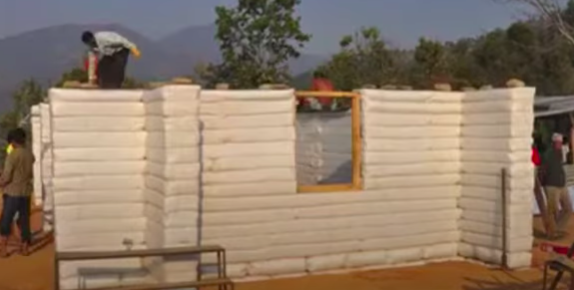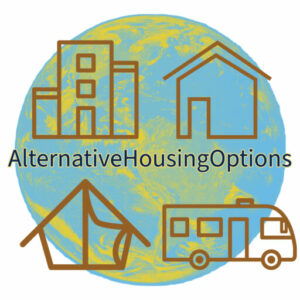Housing costs in the United States have continued a steady increase since the mortgage crash of 2008-2009. Those costs have seemed to reach unsustainable heights in the past five years, and yet, they keep ongoing. Unfortunately, this puts most people back in the rental market unless they consider building one of the many unique alternative housing options available today. Today, people think of all kinds of alternative housing ideas like a converted bus or a cob home.
How much does alternative housing cost? Alternative housing options range from free by trading services such as housesitting to a barndominium which can range from $50,000–$100,000 or more depending on custom features. Many alternative housing options range between $2,000–$50,000.
While some of them may require you to live a different lifestyle than you may be accustomed to, maybe you’re trying to travel more as a passion project; the nice thing is with an RV, van camper, converted moving truck, or bus, you can take your house with you.
Which alternative housing options are low-cost?
The alternative housing options below all come with one thing to remember, the more customized your build-out of alternative housing, the more they will likely cost in time or money. These options are similar to a traditional house but have alternative building processes and materials.
The cost of building a cob home

Cob homes are sturdy, often small, and constructed with sustainable materials giving each home a unique look. Cob is made from clay or sand and mixed subsoil, straw, or other fibrous material and water. It can be combined with other construction processes or materials to create a modern home or used for smaller projects like privacy walls and sheds. They cost between $2,000-10,000 to build in a very manual labor process. Keep in mind this cost is for the structure and not the interior finish work.
Pros: Cob homes have a non-existent carbon footprint and minimal impact when torn down. They are beautiful and fit into any landscape. The construction costs for cob homes can be very affordable. They are energy-efficient and soundproof. They can have a mix of locally sourced building materials and cob. They are customizable, and you can be very creative with the home’s “built-in” features. They are fireproof, termite-proof, and earthquake-proof.
Cons: Ventilation is essential, or the house will be humid. You may need HVAC systems in hot or cold locations. They are labor-intensive to build and take a long time as each layer needs to dry before building higher. A cob house may require special building permits. Not advisable for areas of high flooding or natural disasters like hurricanes or tornadoes.
Pre-existing: Due to its customized nature, a cob home can cost as much as a traditional home if you’re considering buying one for sale now.
The cost of building an Earthship

An Earthship house is made out of alternative materials that have been recycled. The house fuels itself using renewable and eco-friendly energy sources like solar panels and wind turbines. Earthships cost between $150 and $225 per square foot to build. All the work is custom, excavation and permits can be high, and many design elements, like large windows and solar panels, are not cheap. But you can bring the cost down by using locally sourced materials and having a lot of construction help.
Find your own 100 watt solar panels here.
Pros: You can save money on heating, cooling, electrical, and sewer costs, but you will still have some. You can potentially save money in raising your own food as well, depending on where you live. Earthships do reuse items that would otherwise live in a landfill. That is a plus.
Cons: They are very time-consuming to build, up to 2 years to collect all the materials necessary. They only work well in dry, arid climates.
Pre-existing: Unlike other alternative homes, they tend not to hold much resale value. They are a labor of love and a great option if you want to be creative and build a non-traditional home. On the plus side for buyers, you may be able to buy a pre-existing Earthship for $250,000-500,000 instead of a building.
The cost of building an earth berm home

An earth berm house is usually built on flat land or a small hill where the earth is brought up and tightly packed against the exterior walls. Depending on your design, the earth could cover one or more sides of the house or all of the walls like a “hobbit house.” There is an extra cost of digging an underground house that you don’t usually have in a traditional home. Earth berm homes can cost between $100-$120 per square foot to build, but if you’re handy like this couple in Wales, you could build it yourself for $5,000. It took them four months to complete.
Pros: The earth prevents heat loss, providing a natural form of insulation. Earth berm homes are sustainable and have little impact on the land around them. Depending on the climate, you might still require regular insulation.
Cons: They are not a practical build just anywhere. For some, the cost to build is more than they will ever make on reselling the home. Some are even sold at a loss.
Pre-existing: You could get a good deal on an earth berm home. However, they are highly customized.
The cost of building a pallet house

A pallet house is an interesting twist on a tiny house build. They are not very big, typically 90 to 256 square feet. You could build quite a few together to build your own custom-size house. Cut the Wood has some interesting pallet house designs for inspiration. The current cost for wood pallets is $11.25 – 12.50 for new 48”x 40″ GMA pallets. No. 2 recycled 48”x 40” pallets are $4.25–5.50. No. 1 recycled pallets have been priced in the $5.80-$7.40 range. Heat-treated (HT) pallets can usually be $1.00 more for each pallet.
Pros: Pallets can be extremely cheap. You can even get them for free from shippers or retail stores willing to sell some. Pallets are strong, durable, and versatile. Pallet homes can be custom sized for what you need; you just need the land with a foundation to build on.
Cons: Old wood pallets used to be treated with toxic chemicals. A pallet house can be very DIY; if you’re not handy, you may have other costs in finding a contractor to build the house for you.
Pre-existing: You may find a pallet house as a tiny house or a cabin, but the likelihood that you will find a 1500 square foot house is slim to none.
The cost of building an earthbag home

An earthbag home is an exciting home design consisting of bags filled with a mix of sand and soil. If the weather permits, an earthbag house can be built in about 32 days. Earthbag homes often end up being rounded or have domed roofs due to the nature of the bag. They are built on a foundation of tires dug into the ground and filled with soil. Good Earth Global builds earthbag homes, and their current cost is $14.70 per square inch.
Pros: Earthbag homes are inexpensive, easy to build, and environmentally friendly. They are durable, earthquake and flood-resistant. They have their own mass for insulation, but you can add insulation in the construction process. The dome uses very little steel, wood, or concrete to build.
Cons: Earthbag homes may not comply with local permitting regulations and building codes. Generally, they are not as well suited to damp climates because it is hard to waterproof them.
Pre-existing: These homes can be found in Hawaii, California, Utah, Arizona, Kentucky and New Mexico, and other arid areas of the United States.
Other alternative housing ideas when you’re on a budget
There are other unconventional alternative housing options for those who like to travel and explore. These options are buying an RV, van camper, converted bus, or converted moving truck and traveling. This is referred to as boondocking. Boondocking is essentially free camping. You can find free campsites all over the U.S. if you know where to look. Here are a few resources you can use: The Dyrt has a free camping guide, and so does Free Campsites. You can also find local camping for $20–$40. The larger vehicle spots may cost a little more, so be sure to search for something reasonable for you.
The cost of an RV, van camper, converted bus, or moving truck can vary a lot depending on if you DIY the interior living space or you buy it straight off the dealership lot.
Average costs
- RV – $10,000+ for a used RV up to several hundred thousand for a new one.
- Van camper -$25,000–50,000 to purchase and fully convert.
- Skoolie (converted bus) – $20,000-$30,000 and could be less with refurbished items.
- Moving truck – $2,000-10,000 for the truck and another $4,500-10,000 to fully convert.
- Tent and camping gear- $50-$500 for the tent and $200-1000 for the gear depending on the brands you buy.
- Yurt – $11,000-$44,000 depending on the size and luxury.
Some options can fit any lifestyle and budget. While these are average, you could spend as much as you want to make it be a perfect tiny home, or you could be frugal and go with bare-bones living. If you’re thinking of making significant changes in your life, trying one of the more economical alternative housing ideas can be in your favor while you’re learning what you really want in a home.
Some alternative housing options can fit any lifestyle and budget. While these are average, you could spend as much as you want to make it be a perfect tiny home, or you could be frugal and go with bare-bones living. If you’re thinking of making significant changes in your life, trying one of the more economical alternative housing options can be in your favor while you’re learning what you really want in a home.


